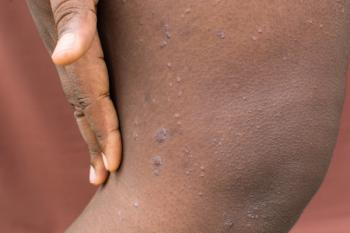
Treatment Options in Relapsed/Refractory Multiple Myeloma
Ola Landgren, MD, PhD: The last segment today is focusing on relapsed and refractory multiple myeloma. Although we have all this progress—improved deep responses, long duration of the responses—unfortunately, most of the patients will continue to relapse. If you look at all the trials that have been developed that also have led to NCCN [National Comprehensive Cancer Network] guidelines, they consistently have these comparisons, as you brought up John, the inferior 2-drug versus 3-drug regimens. Surprisingly, the 3-drug seems to win all the time. But none of these trials have compared the 3-drug versus another 3-drug, versus a third and so forth.
The NCCN, according to the present way of thinking, has put all these in the guidelines, and that’s correct, and they’re FDA approved. Doing continuous treatments for all the patients is still the way we do it, but maybe that’s not necessary.
John Fox, MD, MHA: In the relapsed/refractory setting.
Ola Landgren, MD, PhD: In the relapsed/refractory setting. Sundar, do you have a particular combination you like over the others in the first relapse?
Sundar Jagannath, MD: First of all, I agree that there are multiple combinations available, which is very important. We know the frontline setting has become a triple-drug combination. It could become quadruple too, as we saw, right? It is a changing environment. How the patient comes to you depends upon their prior drug exposure. And then, who is coming to you? Because the patient’s performance status—frailty, renal impairment—all of that has an implication.
Then there is tumor-based, whether this is a high-risk patient or somebody with a biochemical relapse. Somebody who was on maintenance therapy, and their M [myeloma protein] spike went from 0 to 0.2, to 0.5, over a period of time. All of that plays into how a patient does. And moreover, the patient has an important aspect regarding the treatment choice. Because they have gone into first remission, they are a good durable remission, and they’re re-engaged in their life. This is because initially it was a turmoil.
It turned their life upside down. Now they are re-engaged in their life, and they are back to work. They are interested in minimizing the amount of interruption again by the relapse and the treatment. So that is why it is not a cookie cutter approach that I use. It depends upon prior exposure, and the availability of that.
Going back to the backbone discussion, we can build a backbone with an IMiD [immunomodulatory imide drug] or a proteasome inhibitor with an antibody as 1 of the options. Because DVd—the daratumumab, Velcade, dexamethasone—has shown to be effective. Pomalidomide as a backbone, with the daratumumab, and now with isatuximab. Elotuzumab with pomalidomide, dexamethasone had an equivalent outcome like DARA [daratumumab], so we don’t even have to hesitate which one we want to use. So these are options….
Ola Landgren, MD, PhD: Also carfilzomib, daratumumab, dexamethasone is also about to read out. The preliminary data have been from smaller studies. There was a BLOOD paper showing excellent response.
Sundar Jagannath, MD: Yes. It was a proteasome inhibitor with it and daratumumab. You’ve got to remember that before daratumumab and the monoclonal antibody came, there were drugs, putting a patient who had Velcade before on Kyprolis now. They had Revlimid before, they go on pomalidomide now. So you have KPd [carfilzomib, pomalidomide and dexamethasone] as 1 of the treatment arms as well. It all depends upon a mix, so it is very difficult for me to actually tell, “This is what I use.” For frontline therapy we can say, “This is what I use,” much more readily. But in a relapsed patient, I don’t have the recipe changes.
Ola Landgren, MD, PhD: But do you use Revlimid maintenance on many, or not so many patients?
Sundar Jagannath, MD: Yes, we do.
Ola Landgren, MD, PhD: They do relapse on Revlimid. Do you still use Revlimid in the relapsed?
Sundar Jagannath, MD: In the relapsed setting, because we have been focusing on a lot of clinical trials in relapsed patients, I consult the newly diagnosed myeloma patient and send it back to the community. How they come back to me varies. There are patients who would have gone through transplant on no maintenance. Because the patient didn’t want maintenance, or they were on maintenance for 2 to 3 months. But then they had a rash, or they had diarrhea, and then they discontinued. Then they didn’t want on, or the relapse has happened a year after they have discontinued maintenance. The patient comes to you in many different ways.
Ola Landgren, MD, PhD: There’s a broad range of presentations.
Sundar Jagannath, MD: Broad range. In the front line, at least, I can give you a cookie cutter recipe.
Ola Landgren, MD, PhD: Sure.
Sundar Jagannath, MD: In a relapsed situation, you have to have some more information and insight on the patient. This is because relapsed patients are detected. They are not undetected people because they are being monitored since they are relapsed.
Ola Landgren, MD, PhD: Right.
Sundar Jagannath, MD: You’re picking up the relapse a little bit earlier. There is also so-called clinical relapse, or symptomatic relapse, I should say. Everybody’s relapse is a clinical relapse. For a symptomatic relapse, a PET [positron emission tomography] showed a lesion or something like that, or creatinine is going up. Then are asymptomatic relapses because we follow these patients and get the paraprotein level done. So all of this plays into the role.
Newsletter
Stay ahead of policy, cost, and value—subscribe to AJMC for expert insights at the intersection of clinical care and health economics.







































